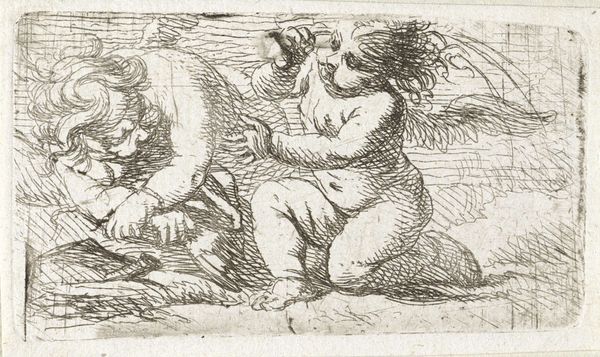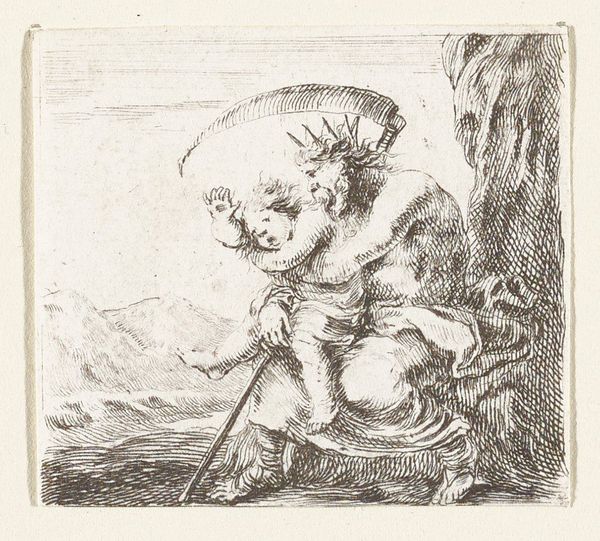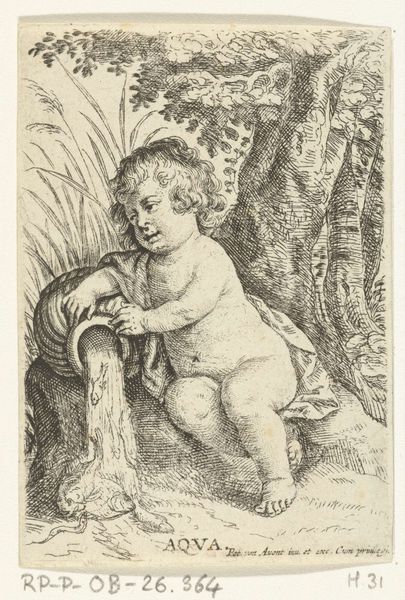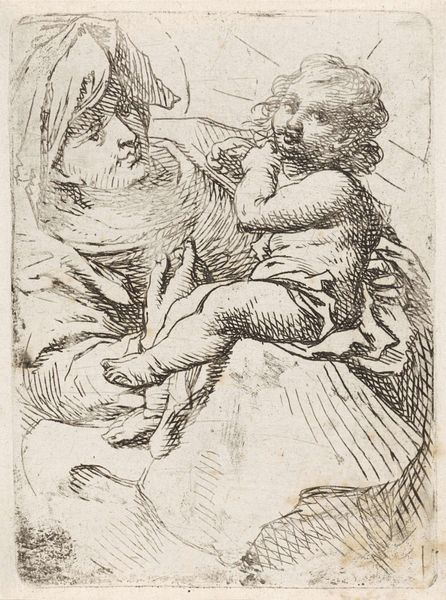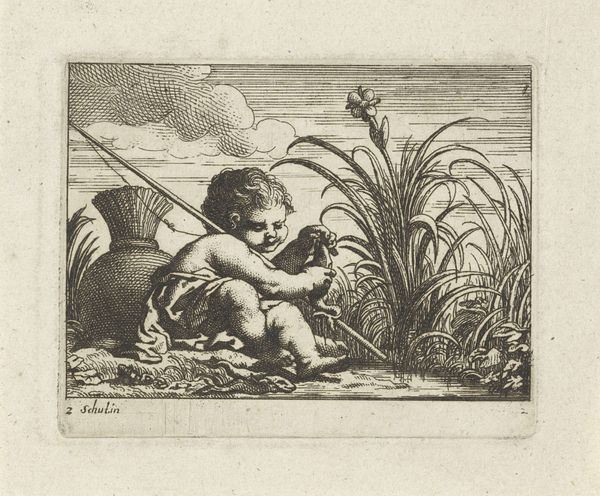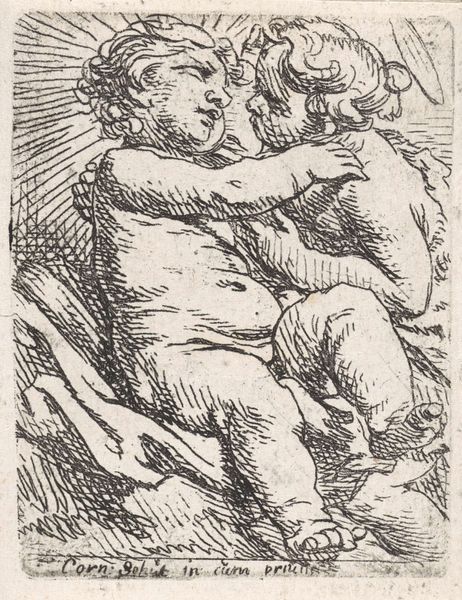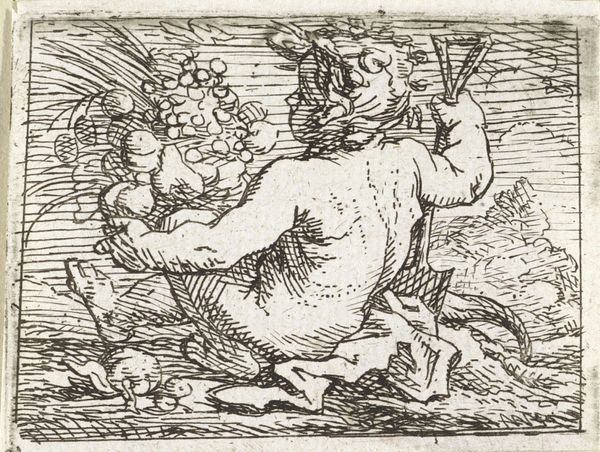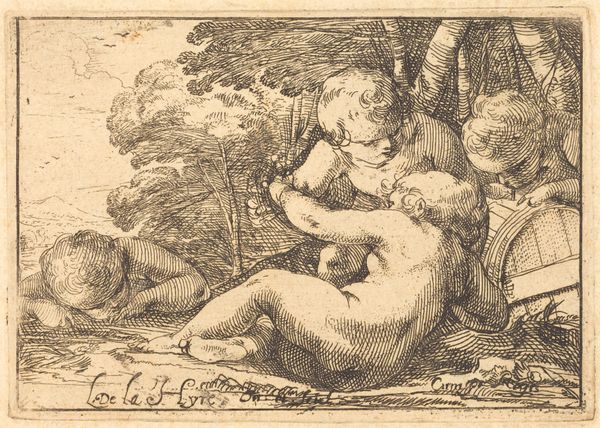
drawing, ink, pen
#
drawing
#
ink drawing
#
narrative-art
#
baroque
#
pen drawing
#
pen illustration
#
pen sketch
#
figuration
#
ink
#
pen
#
genre-painting
Dimensions: height 42 mm, width 53 mm
Copyright: Rijks Museum: Open Domain
Curator: This small drawing is entitled "Water", created with pen and ink by Cornelis Schut sometime between 1618 and 1655. You can see it currently on display at the Rijksmuseum. Editor: The cross-hatching is really intense, isn't it? The composition looks quite dynamic, despite the limited range of values. It makes me think of youthful naivete. Curator: The density of line work certainly builds visual tension. Schut was known for his baroque style, often using allegorical figures and classical themes. The child-like figure is interesting when we consider its possible symbolic connections. Do you think that, within its cultural context, the snakes signify temptation or wisdom? Editor: Snakes have had complex and evolving symbolism. They can signal chaos and primal instinct. Perhaps the boy embodies the stage of pre-social morality—playing innocently with that which could be perceived as dangerous or evil later on. Given the sociopolitical context of the period, and the rise of public science museums, how was Schut reflecting public fascination with natural curiosities and the concept of 'the other'? Curator: That's a solid argument, viewing Schut’s piece as part of that era’s culture. His approach to classical allegories would definitely have shifted due to those social dynamics, so maybe here we’re not intended to decode any concrete moral, but rather observe nature's wildness embodied in the child. It reminds us that water can cleanse or drown. Editor: Exactly! In his time, these displays of "natural philosophy" blurred entertainment with education and shaped public views. To consider his position during The Dutch Golden Age also frames how it connects to mercantilism and exploitation. Curator: A connection between art, early scientific thinking, and expanding colonialism – very astute, framing it within its complete history like that makes so much more sense! I can almost feel that shift in how knowledge was being understood back then through this artwork. Editor: Thinking about its role within a public collection like the Rijksmuseum, prompts further introspection. Curator: Definitely, analyzing its impact within different historical and cultural frameworks enriches my experience of it. Thanks!
Comments
No comments
Be the first to comment and join the conversation on the ultimate creative platform.
